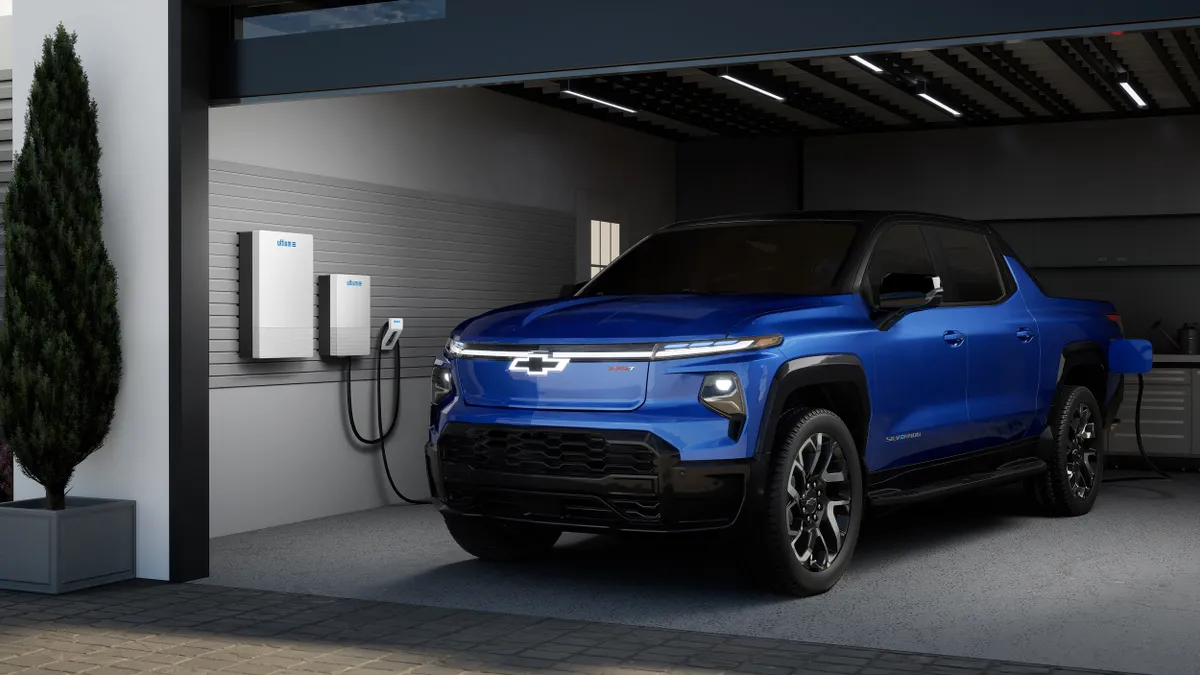Dive Brief:
- General Motors will offer bidirectional charging capability for its Ultium-based electric vehicles by 2026, according to a Tuesday press release.
- The vehicle-to-home charging technology will be available to residential customers through the automaker’s subsidiary GM Energy. The first EVs equipped with the bidirectional charging technology include the 2024 Chevrolet Silverado pickup, Equinox and Blazer, as well as the GMC Sierra EV Denali Edition 1, Cadillac LYRIQ and upcoming Escalade IQ.
- GM EV customers will be able to store and transfer energy to a home during peak demand or during a power outage using their vehicle's battery or with an optional stationary storage unit.
Dive Insight:
The new charging options are designed to make it easier for residential customers to use the power stored in their GM vehicle’s battery. The automaker’s Ultium Home V2H Enablement Kit includes a power inverter, home hub and dark start battery delivering 9.6 kW of discharge power as needed.
Customers will be able to control and monitor the various V2H charging features using GM’s Energy Cloud, a software platform that will allow customers to manage the transfer of power to and from the vehicle.
“By integrating V2H across our entire Ultium-based portfolio, we are making this groundbreaking technology available to more consumers, with benefits that extend well beyond the vehicle itself, and at broader scale than ever before,” said Wade Sheffer, vice president at GM Energy, in a statement.
GM’s rival Ford also offers a bidirectional charging kit for Ford F-150 Lightning customers. Customers first need to purchase an 80-amp Ford Charge Station Pro home charger, which connects to Ford’s Home Integration System to enable bidirectional charging. The F-150 Lightning equipped with an extended-range battery can power a home for up to three days, according to Ford. The V2H hardware requires professional installation by Ford’s utility partner Sunrun.
GM’s Ultium Home products also include its Ultium Home Energy Storage Bundle, which uses a stationary energy storage unit to store and supply power without the need for an EV.
Additional details on the availability of V2H technology and the rollout to individual Ultium-based EV models will be shared at a later date.












